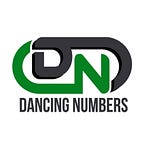How to Migrate from Foundation to QuickBooks: A Comprehensive Guide
Migrating your data from Foundation to QuickBooks is a pivotal step in optimizing your accounting processes and unlocking new opportunities for efficiency and growth. In this comprehensive guide, we’ll delve into the intricacies of data migration and explore the numerous benefits it offers for businesses of all sizes.
Understanding Data Migration
Data migration refers to the process of transferring data from one system or platform to another, typically to leverage new features, enhance performance, or consolidate information. When transitioning from Foundation to QuickBooks, QuickBooks data conversion is essential for maintaining continuity in your financial records and ensuring accuracy in your accounting processes.
Benefits of Data Migration
Streamlined Workflow
Migrating from Foundation to QuickBooks allows you to streamline your workflow by centralizing your financial data in a single, user-friendly platform. With QuickBooks, you can access real-time information, generate customizable reports, and automate repetitive tasks, saving time and reducing manual errors.
Improved Reporting and Analysis
QuickBooks offers robust reporting and analysis tools that empower you to gain deeper insights into your business finances. By migrating your data, you can create customized reports, track key performance indicators, and make data-driven decisions with confidence.
Enhanced Scalability
As your business grows, QuickBooks provides the scalability and flexibility to adapt to your evolving needs. Whether you’re adding new users, expanding your product offerings, or entering new markets, QuickBooks can accommodate your changing requirements and support your continued success.
Increased Collaboration
QuickBooks facilitates seamless collaboration among team members, allowing multiple users to access and update financial data simultaneously. With features such as user permissions and remote access, you can collaborate more effectively and improve communication across your organization.
Step-by-Step Guide to Data Migration
- Assess Your Data: Begin by conducting a thorough assessment of your existing data in Foundation to determine what needs to be migrated to QuickBooks.
- Prepare Your Data: Cleanse and organize your data to ensure accuracy and consistency, resolving any formatting discrepancies or errors.
- Backup Your Data: Before initiating the migration process, create a backup of your Foundation data to prevent any loss of information.
- Export Data from Foundation: Utilize the export functionality in Foundation to extract your financial data in a compatible format for QuickBooks.
- Import Data into QuickBooks: Follow the prompts in QuickBooks to import your data files and map them to the appropriate fields.
- Verify Data Accuracy: Conduct thorough testing and validation to ensure that all data has been successfully migrated and that financial reports are generating accurately.
- Train Users: Provide training and support to users who will be interacting with QuickBooks to ensure a smooth transition and optimal utilization of the software.
Conclusion
Migrating data from Foundation to QuickBooks is a strategic decision that can yield significant benefits for your business. By following the step-by-step guide outlined in this article and leveraging the advantages of data migration, you can streamline your accounting processes, gain deeper insights into your finances, and position your business for long-term success.
